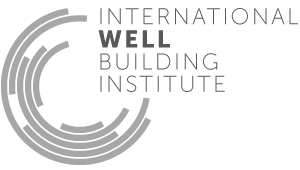PILOT PROGRAM
Given the unique opportunities and challenges presented by different building types, additional time and resources are needed to aggregate the necessary scientific and institutional support to refine the WELL Building Standard to the specific needs of additional project typologies. As such, Pilot Programs are in development to test and refine how WELL can best apply to different building types.
The development of Pilot Programs will be undertaken in conjunction with key partners in a formal process that respects the specific circumstances of a new vertical and its associated typologies. Pilot partners are selected based on their capacity to test, refine and implement WELL for the chosen building vertical and applicable typologies. The WELL Building Standard is a continuously evolving program that is updated as improved evidence and technologies become available. Current pilots include the following:
Education
Places of learning, including elementary schools, middle schools, high schools and higher education facilities must provide for the needs of teachers and students of all ages. There are several differences between education facilities and offices that justify the need for an independent pilot addendum.
Residential Multifamily
Residential multifamily settings include market-rate and affordable housing, dormitories, and senior independent living facilities. The range of activities undertaken in the home varies greatly from those in an office. Homes are the places where people prepare and eat meals, sleep, and gain respite from the world. The WELL Building Standard for multifamily residences must reflect and support these varied needs. Single-family homes and duplexes are not currently part of the residential pilot.
Athletic Facilities
Some facilities, such as gymnasiums and spas, require stricter standards of hygiene and safety because such environments involve frequent dermal contact with surfaces shared across large numbers of people. Well Features must address the challenging nature of the interior environments of these types of facilities, the number and rate turnover of occupants, and their degree of physical activity.
Retail
Retail centers, including shops, restaurants and malls, are another opportunity to design and construct buildings to the WELL Building Standard. Retail spaces are unique in that they simultaneously house and cater to two distinct groups: the transient consumer and the staff, who spend many more hours in the facility. Many retail centers provide food, increasing the importance and relevance of many of the WELL Nourishment Features.
Arenas
Large public buildings, such airports, convention centers, stadiums, and sports or events complexes must serve large volumes of people and provide a wide variety of functions. WELL Features that apply to these building types must address the complexity, size, and variety and volume of users that frequent these environments.
Healthcare
Healthcare facilities care for the most vulnerable. WELL Features that apply to hospitals, clinics, medical offices, and nursing homes must address the needs of the ill and recovering, creating conditions that are conducive to healing by alleviating stress, mitigating the spread of disease, providing nutritious food, and improving occupant comfort.
